Want to know more about the Best Engineering Schools In the US and make an informed decision? Here is a good place to start.
Today, we’ll be taking a deep dive into the top engineering schools in the US. From mind-bending calculations to groundbreaking discoveries, these institutions are home to some of the brightest minds in the country.
So, if you’re ready to join the ranks of the engineering elite, grab your notebook and let’s get started!
Please note that schools are selected based on our criteria (at the end of the article), ranked by the latest acceptance rate.
Table of Contents
#25. Texas A&M University, College Station
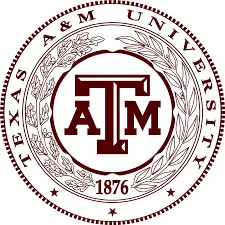
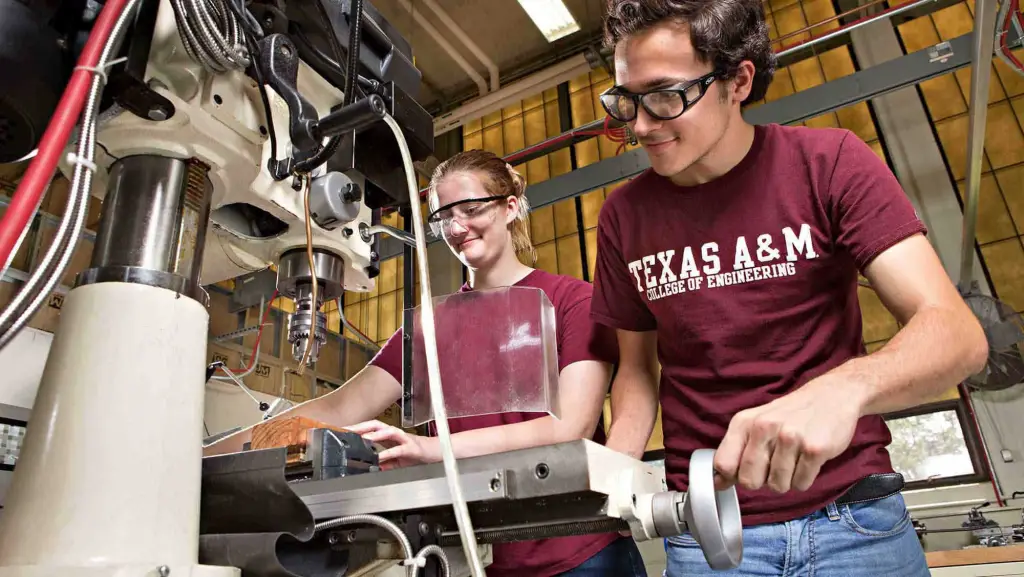
- Acceptance rate: 67%
- Average entry score: 1180-1390 SAT or 31 ACT
- Student-to-faculty ratio: 21 to 1
- Estimated cost of attendance (tuition and fees): $30,608-$58,976
- Average earning potential for graduates: $81,800 (College Simply)
Texas A&M Engineering is one of the largest and most respected engineering schools in the nation. This school creates an environment that encourages students to take ownership of their academic success.
Texas A&M University Engineering offers a wide range of programs in aerospace engineering, chemical engineering and environmental science. This school also offers computer science, electrical engineering and mechanical engineering undergraduate degrees.
#24. University of Maryland, College Park


- Acceptance rate: 51%
- Average entry score: 1330 SAT or 30-34 ACT
- Student-to-faculty ratio: 18 to 1
- Estimated cost of attendance (tuition and fees): $10,955-$50,000
- Average earning potential for graduates: $86,533 (College Factual)
Study at the University of Maryland if you want to be at the forefront of innovation. The university’s reputation for research and innovation is well-earned, as it is one of the top public universities in the U.S.
As an undergraduate engineering major, you’ll have access to a wide range of courses.
From chemical engineering to computer science, you’ll find a program that suits your interests and goals. The university is also known for its programs in materials science, which can prepare students for careers in fields like nanotechnology.
#23. University of Washington
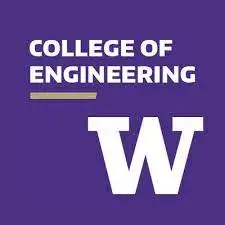

- Acceptance rate: 48.7%
- Average entry score: 1200-1470 SAT or 27-33 ACT
- Student-to-faculty ratio: 9 to 1
- Estimated cost of attendance (tuition and fees): $30,640-$58,470
- Average earning potential for graduates: $58,500 (College Simply)
Students at the UC College of Engineering are challenged to think creatively, solve real-world problems, and design solutions that improve people’s lives.
The college is committed to providing an outstanding undergraduate experience that combines academic excellence with a supportive community of scholars.
Students enjoy a strong reputation for producing cutting-edge advances in science and technology. They are at the forefront of efforts to apply science to real-world problems, and they are committed to making a difference.
#22. University of Illinois at Urbana-Champaign
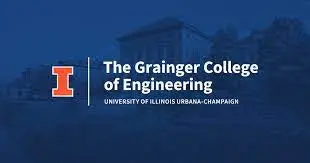
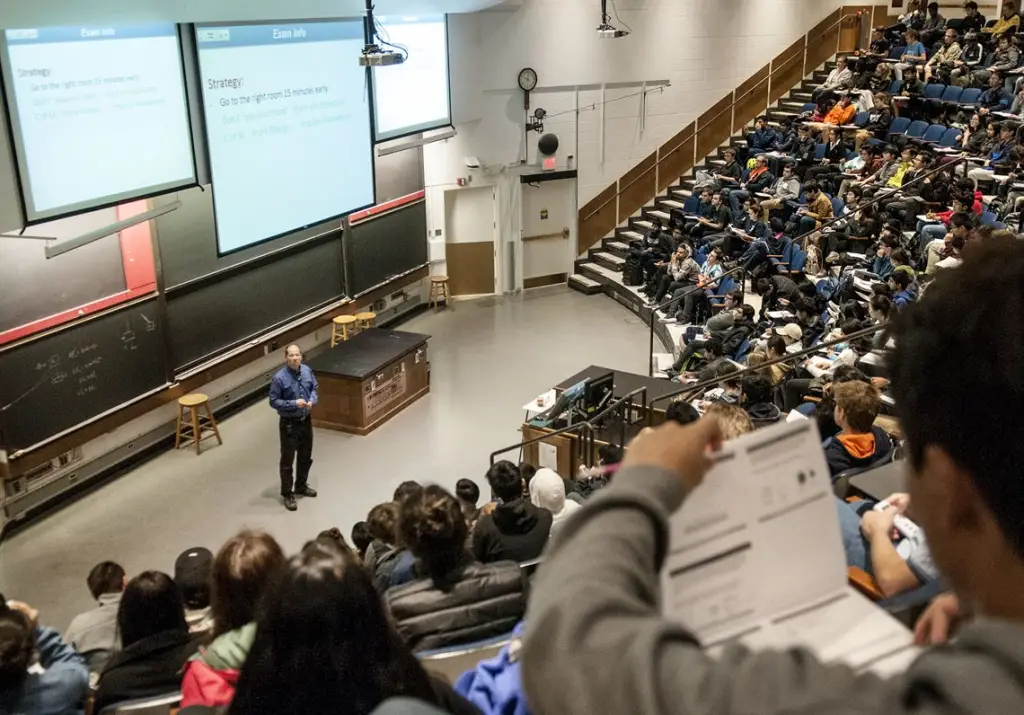
- Acceptance rate: 44.8%
- Average entry score: 1200-1380 SAT
- Student-to-faculty ratio: 21 to 1
- Estimated cost of attendance (tuition and fees): $33,060-$50,510
- Average earning potential for graduates: $73,900 ( College Simply)
Grainger College of Engineering at UIUC is home to a top-ranked engineering school that’s been educating students for over 150 years. The department offers courses at both the undergraduate and graduate levels, with an emphasis on hands-on learning experiences and innovation.
Engineering graduates leave Grainger prepared to enter the workforce with diverse skills and knowledge. The school also has an active alumni network that provides students with opportunities for networking and post-graduation job placement.
Similar articles like this:
- 25 Best Forestry Schools In The US
- 25 Best Schools For Environmental Science In The US
- 25 Best Schools For Health Sciences Degrees In The US
#21. University of Colorado, Boulder
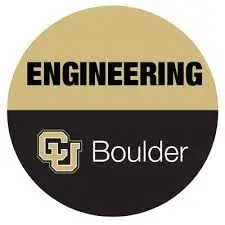
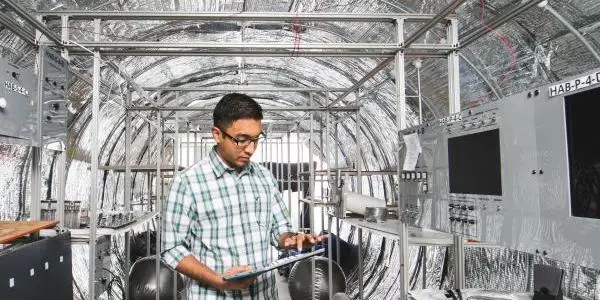
- Acceptance rate: 40%
- Average entry score: 1290-1470 SAT or 29-33 ACT
- Student-to-faculty ratio: 17 to 1
- Estimated cost of attendance (tuition and fees): $30,452-$57,702
- Average earning potential for graduates: $107,00 ( College Simply)
CU Boulder Engineering is a premier program that has consistently been ranked among the top engineering schools in the country. With over 50 undergraduate and graduate degree programs, you’ll be able to find an engineering program that fits your interests and goals.
This university trains students to think creatively and critically while also providing a highly collaborative environment that prepares them for careers in the engineering field.
The program’s strengths include its depth and breadth of research opportunities. Its focus on sustainability and environmental engineering makes it a good choice for students who want to make a difference in the world.
#20. Purdue University, West Lafayette
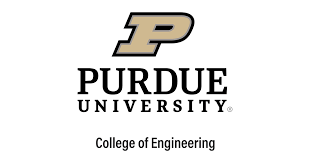

- Acceptance rate: 37%
- Average entry score: 1380-1520 SAT or 31-35 ACT
- Student-to-faculty ratio: 14 to 1
- Estimated cost of attendance (tuition and fees): $24,390-50,000
- Average earning potential for graduates: $89,400 (College Simply)
Purdue University offers more than 80 engineering programs at certificate, associate, bachelor’s and master’s levels. These courses cover the full spectrum of engineering expertise, including aerospace, biological, chemical and materials engineering.
With more than 50 research centers and institutes, Purdue University provides students with the freedom to explore new ideas and develop their own research projects.
Graduates leave school with a strong understanding of the field and an ability to apply this knowledge in real-world settings. The school’s graduates have gone on to work for Apple, Boeing, Intel, and other prestigious companies in the world.
#19. University of California, San Diego

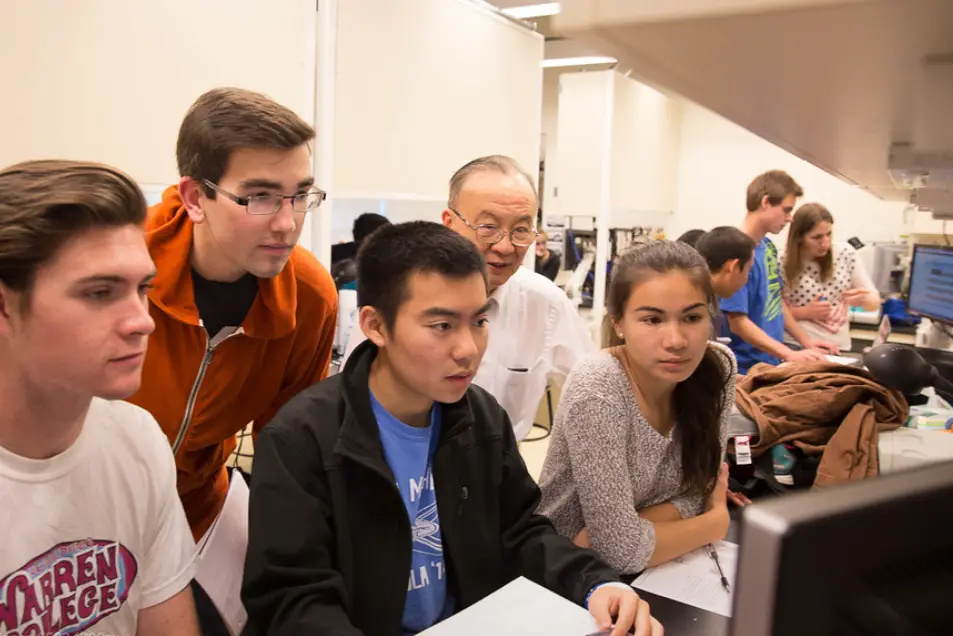
- Acceptance rate: 31%
- Average entry score: 26-31 ACT
- Student-to-faculty ratio: 12 to 1
- Estimated cost of attendance (tuition and fees): $36,061-65,835
- Average earning potential for graduates: $109,700 (College Simply)
UC San Diego blends an excellent academic reputation with a vibrant campus life. The school features more than 100 research centers and institutes, seven libraries and more than 150 student organizations to help students connect with the community.
Students enrolled in engineering programs enjoy the benefit of working with faculty members who are experts in their fields. They also have access to cutting-edge research laboratories and state-of-the-art computing resources.
The engineering program at UC San Diego is accredited by ABET. This ensures that all courses meet quality standards and prepare students for careers in the field.
#18. Columbia University

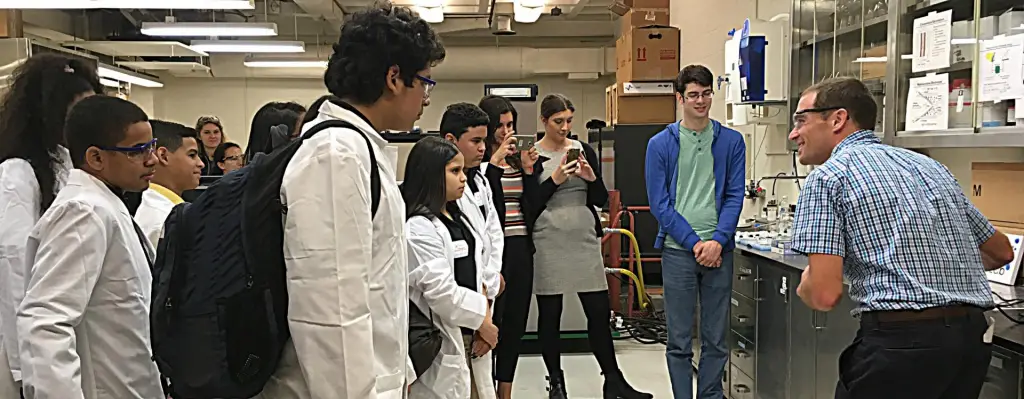
- Acceptance rate: 28%
- Average entry score: 1480-1560 SAT or 33 ACT
- Student-to-faculty ratio: 6 to 1
- Estimated cost of attendance (tuition and fees): $85,000
- Average earning potential for graduates: $68,400 (College Simply)
The engineering curriculum at Columbia University is designed to provide students with a well-rounded education. Courses focus on the fundamentals of engineering and science as well as the application of these concepts in real-world settings.
Students gain hands-on experience through lab work and internships, which allows them to develop valuable skills for today’s competitive job market.
The Fu Foundation School of Engineering and Applied Science is also known for its high standards and rigorous admissions process. In addition to high school GPA and SAT/ACT scores, applicants must submit a personal statement, letters of recommendation and official transcripts.
This way, the school can ensure that each incoming student is well-qualified and committed to engineering.
Similar articles like this:
- 25 Best Immunology Schools In The US
- 25 Best Microbiology Schools In The US
- 25 Best Education Schools In The US
#17. University of Michigan, Ann Arbor
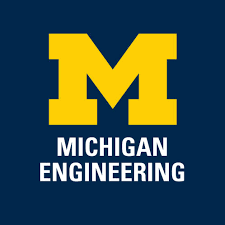
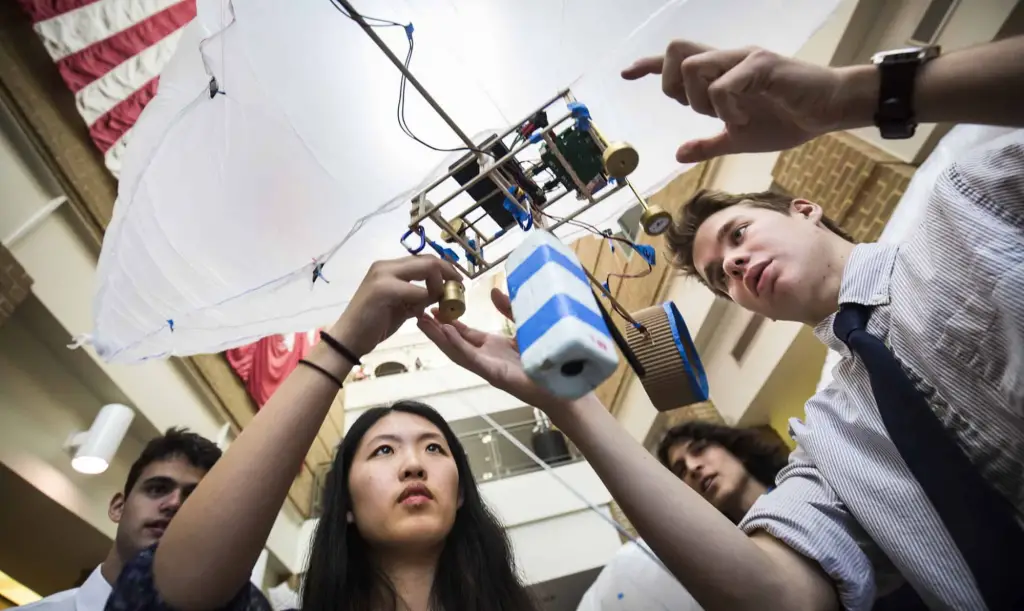
- Acceptance rate: 20%
- Average entry score: 1360-1530 SAT or 31-35 ACT
- Student-to-faculty ratio: 15 to 1
- Estimated cost of attendance (tuition and fees): $32,272-$69,326
- Average earning potential for graduates: $110,600 (College Simply)
As engineering is at the core of many of the world’s greatest inventions, it has a profound impact on our daily lives.
The University of Michigan College of Engineering is committed to educating engineers who will continue this tradition by developing creative solutions to today’s challenges and inventing the technologies that will shape tomorrow.
Michigan Engineering opens students’ eyes to the world of engineering and its many applications. The college offers a wide array of disciplines, from aerospace to chemical engineering, each with its own unique opportunities for students to explore their interests.
Engineering students acquire a broad base of knowledge, an ability to think critically and creatively, and a sense of responsibility for their actions. They also learn how to work in teams and communicate effectively with people from all backgrounds.
#16. Georgia Institute of Technology

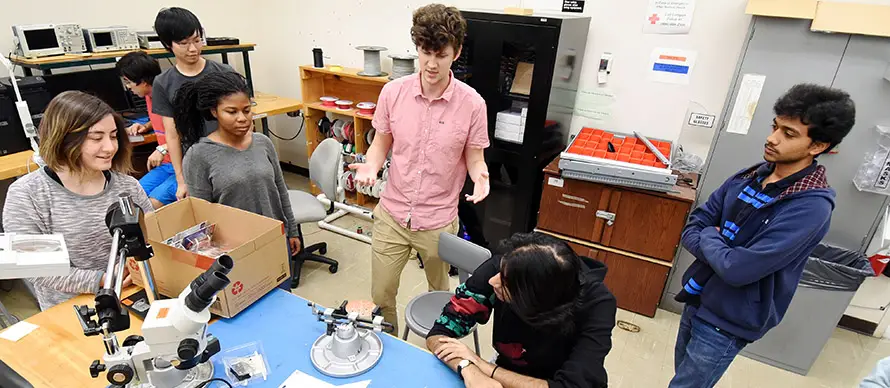
- Acceptance rate: 17%
- Average entry score: 1360-1540 SAT or 31-35 ACT
- Student-to-faculty ratio: 21 to 1
- Estimated cost of attendance (tuition and fees): $31,898-$53,010
- Average earning potential for graduates: $96,400 (College Simply)
The College of Engineering at Georgia Tech has a rigorous academic program emphasizing a strong foundation in the traditional engineering disciplines: mechanical, electrical and computer.
This college is committed to producing graduates ready for industry or graduate school careers.
It offers undergraduate and graduate degree programs designed to provide its students with the knowledge and skills they need to meet the challenges of engineering.
Georgia Tech’s conducive environment allows students to achieve their full potential as engineers. Taught by experienced faculty and industry professionals, students gain a solid understanding of engineering concepts and skills through hands-on projects, field trips, internships and research opportunities.
#15. Carnegie Mellon University


- Acceptance rate: 17%
- Average entry score: 790-800 SAT–Math
- Student-to-faculty ratio: 6 to 1
- Estimated cost of attendance (tuition and fees): $77,474
- Average earning potential for graduates: $78,200 (College Simply)
Carnegie Mellon’s College of Engineering is a leader in groundbreaking research, teaching and outreach activities that advance the fields of engineering and technology. This school moulds the next generation of leaders, innovators and entrepreneurs.
The college offers a variety of undergraduate and graduate programs in engineering, computer science, industrial management and materials science.
We love Carnegie Mellon University’s focus on interdisciplinary education and research. This allows students to take classes in multiple fields and form bonds with professors who may be working on similar projects.
#14. Northwestern University
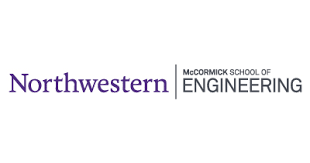

- Acceptance rate: 13%
- Average entry score: 1460-1560 or 33-35 ACT
- Student-to-faculty ratio: 6 to 1
- Estimated cost of attendance (tuition and fees): $83,784
- Average earning potential for graduates: $75,700 (College Simply)
NU’s McCormick School of Engineering brings together top faculty to help students understand and apply engineering principles to solve real-world problems.
Students at NU enjoy small classes, plenty of opportunities for hands-on experience and a strong network of alumni. These former students are happy to help current students find jobs after graduation.
The university’s career services office also works hard to connect students with internships and full-time jobs. With a small class size, students receive individualized attention from faculty members. This ensures that students get the most out of their education.
Similar articles like this:
- 25 Best Material Science Schools In The US
- 25 Best Schools For Math In The US
- 25 Best Medical Schools In The US
#13. Johns Hopkins University
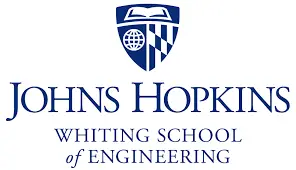
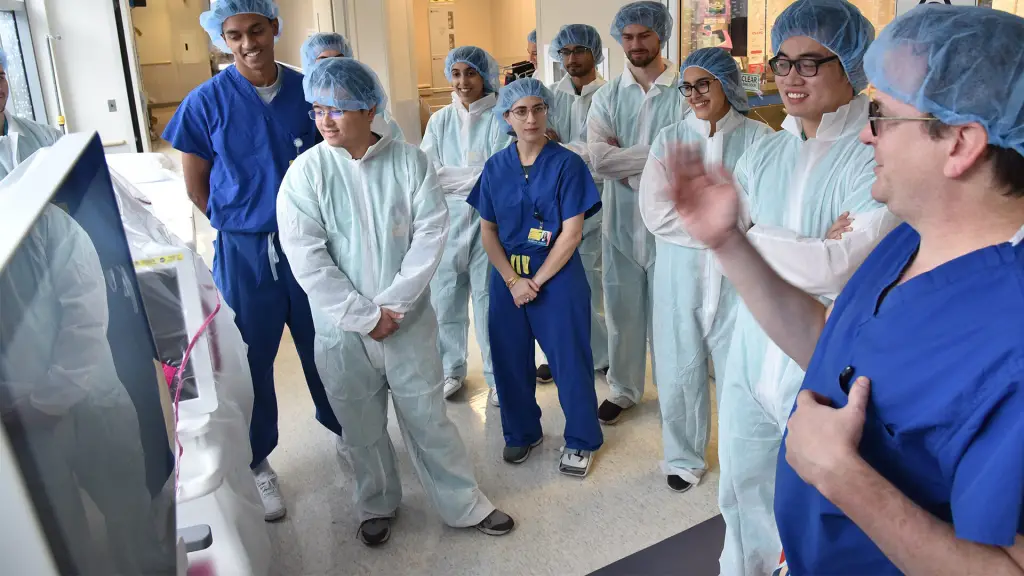
- Acceptance rate: 11.1%
- Average entry score: 1470-1560 SAT or 34-36 ACT
- Student-to-faculty ratio: 7 to 1
- Estimated cost of attendance (tuition and fees): $78,657
- Average earning potential for graduates: $76,000 (College Simply)
The Johns Hopkins University engineering students are known for their innovation, collaboration and leadership skills.
To achieve this, the school has put in place an innovative program that incorporates engineering, business and liberal arts. It is this combination of skills that makes the school’s graduates so sought after by employers.
The institution’s integrated approach blends academic knowledge with real-world experience, giving students the tools they need to succeed.
The university operates a number of research centers and facilities, allowing students to gain hands-on experience and collaborate with industry professionals.
#12. University of Pennsylvania
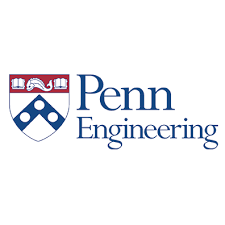

- Acceptance rate: 10%
- Average entry score: 1560 SAT or 35 ACT
- Student-to-faculty ratio: 7 to 1
- Estimated cost of attendance (tuition and fees): $65,790
- Average earning potential for graduates: $74,300 (College Simply)
Future computer scientists and engineers can look forward to a solid foundation in their major. The curriculum is designed to give students the skills they need to tackle real-world problems, such as computer security and artificial intelligence.
Students also have the opportunity to work with faculty members on research projects. They also have the chance to present their findings at professional conferences.
Therefore, students are well-positioned to gain real-world experience and make valuable contacts that can help them in their careers.
#11. University of Southern California
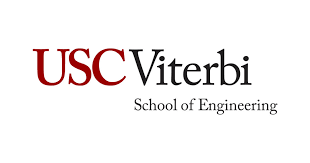
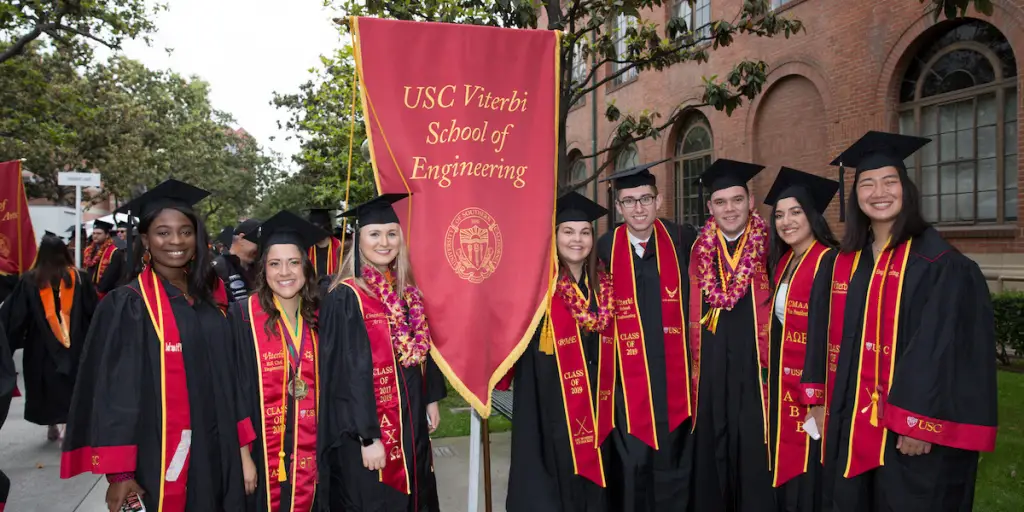
- Acceptance rate: 10%
- Average entry score: 1340-1530 or 30-34 ACT
- Student-to-faculty ratio: 9 to 1
- Estimated cost of attendance (tuition and fees): $60,446
- Average earning potential for graduates: $87,700 (College Simply)
The Viterbi School of Engineering at the University of Southern California is a community where scholars and researchers collaborate to solve challenging problems. This school has an innovative curriculum that prepares students for careers in the greatest technical challenges of our time.
Bringing together a diverse student body and a team of faculty who are passionate about education, USC Viterbi is pioneering new approaches to engineering education.
The school’s research centers and institutes also serve as hubs for interdisciplinary collaboration. They help USC students develop the next generation of technologies to improve our world.
#10. University of Texas, Austin
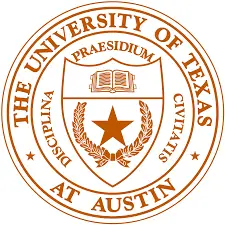

- Acceptance rate: 10%
- Average entry score: 1470 SAT or 33 ACT
- Student-to-faculty ratio: 16 to 1
- Estimated cost of attendance (tuition and fees): $28,928-$57,512
- Average earning potential for graduates: $110,400 (College Simply)
The Cockrell School of Engineering at UT-Austin boasts world-class programs that prepare students for careers in engineering, computer science and applied sciences.
As a top public research university, the school has extensive resources available to students and faculty in the form of state-of-the-art facilities.
Students can choose any of the 11 engineering majors at the Cockrell School of Engineering and enjoy the benefits of being part of a large research university.
UT-Austin brings together the best and brightest students, faculty, researchers and industry partners to solve complex problems and develop innovative solutions that improve lives around the globe.
Similar articles like this:
- 25 Best Multidisciplinary Schools In The US
- 25 Best Gerontology Schools In The US
- 25 Best Nursing Schools In The US
#9. University of California, Berkeley
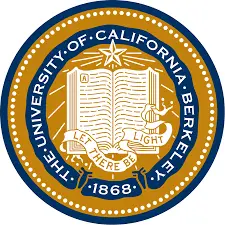

- Acceptance rate: 9.7%
- Average entry score: 1300-1530 SAT or 30-34 ACT
- Student-to-faculty ratio: 17 to 1
- Estimated cost of attendance (tuition and fees): $41,878-71,632
- Average earning potential for graduates: $116,600 (College Simply)
Berkeley Engineering equips students with the knowledge and skillset to tackle some of the most challenging issues of our time.
With a focus on developing the next generation of global leaders, the school’s cutting-edge research and educational programs are designed to prepare students for success in a range of fields.
The goal is to give students a solid foundation in engineering fundamentals and an understanding of how technology can help us solve real-world problems.
Study computer science and other high-paying engineering courses under the guidance of world-renowned faculty members. Graduates leave Berkeley Engineering with the knowledge, skills and experience needed to build a successful career in one of today’s top industries.
#8. California Institute of Technology

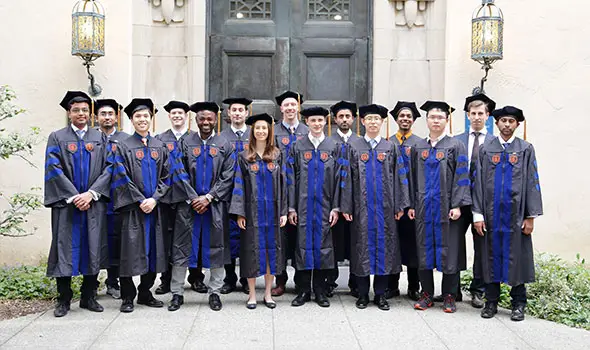
- Acceptance rate: 7%
- Average entry score: 1530-1580 SAT or 35-36 ACT
- Student-to-faculty ratio: 3 to 1
- Estimated cost of attendance (tuition and fees): $83,598
- Average earning potential for graduates: $85,800 (College Simply)
Home to Nobel Prize winners and Rhodes Scholars, Caltech is a world-renowned research university that pushes the boundaries of knowledge in science and engineering. Caltech offers several engineering degree programs through its Division of Engineering and Applied Sciences.
Aside from its world-class faculty, Caltech offers students the opportunity to work in state-of-the-art research labs and participate in community service projects. Students can also get involved with the student body through more than 100 student organizations.
The medical engineering program at Caltech combines the core principles of engineering with the latest developments in medicine. The program is designed for students who want to build their careers in biomedical research and development.
Caltech’s graduates are highly sought after by top companies in the industry, as they have a solid grasp of the engineering principles of their field and can apply them to real-world problems.
#7. Princeton University

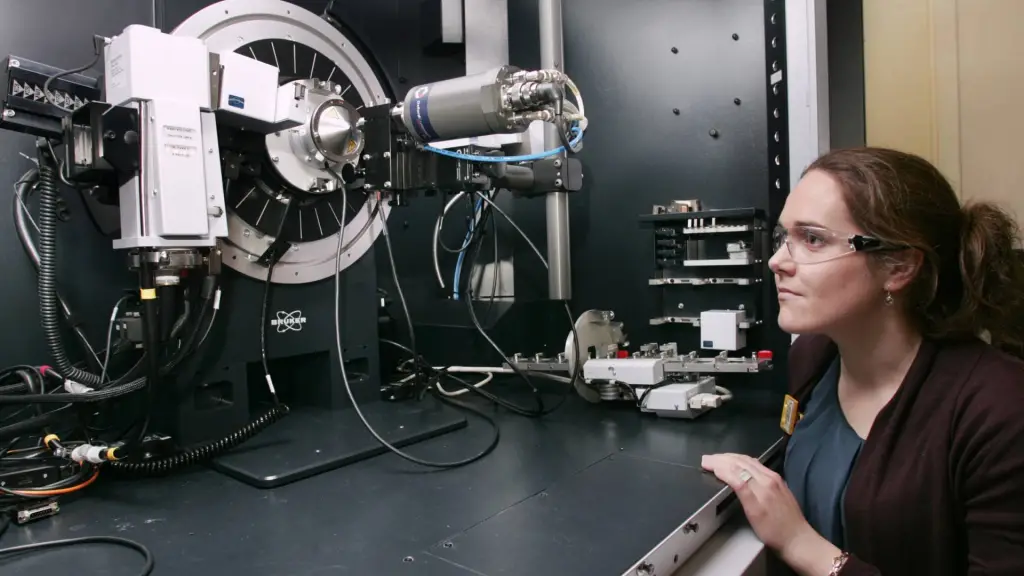
- Acceptance rate: 6.99%
- Average entry score: 760-800 SAT Math
- Student-to-faculty ratio: 5 to 1
- Estimated cost of attendance (tuition and fees): $78,490
- Average earning potential for graduates: $73,640 (Grad Reports)
Princeton’s world-class engineering school offers a top-notch undergraduate experience that prepares students to enter the field of engineering. The school has earned a reputation for its research-heavy programs, which include engineering physics, electrical engineering and materials science.
Students can also choose from several interdisciplinary programs that blend engineering and other disciplines. The school’s location in the heart of Princeton makes it easy for students to take advantage of the campus’s many resources, including libraries and state-of-the-art research facilities.
#6. Duke University
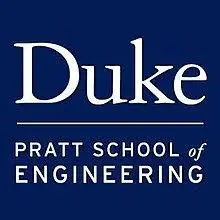
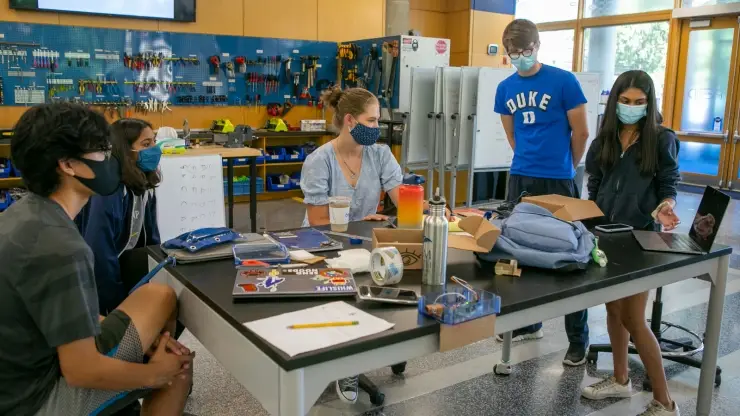
- Acceptance rate: 6%
- Average entry score: 1480-1570 SAT or 33-35 ACT
- Student-to-faculty ratio: 8 to 1
- Estimated cost of attendance (tuition and fees): $84,517
- Average earning potential for graduates: $84,200 (College Simply)
Duke University’s Pratt School of Engineering is a leading innovator in education, research, and practice. The school’s faculty members are international leaders in their fields.
They also have diverse backgrounds, providing students with a broad educational experience.
Duke Engineering boasts a strong record of achievement, including many awards and recognitions for its faculty and students.
Graduates of the school enjoy successful careers in architecture, bioengineering, computer science, electrical and computer engineering, materials science, and engineering.
What is it like to study at Duke University?
Similar articles like this:
- 25 Best Schools For Neuroscience In The US
- 25 Best Pharmaceutical Sciences Schools In The US
- 25 Best Astronomy Schools In The US
#5. University of California, Los Angeles
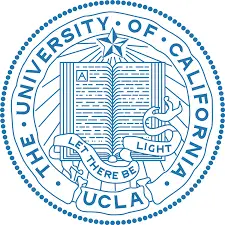
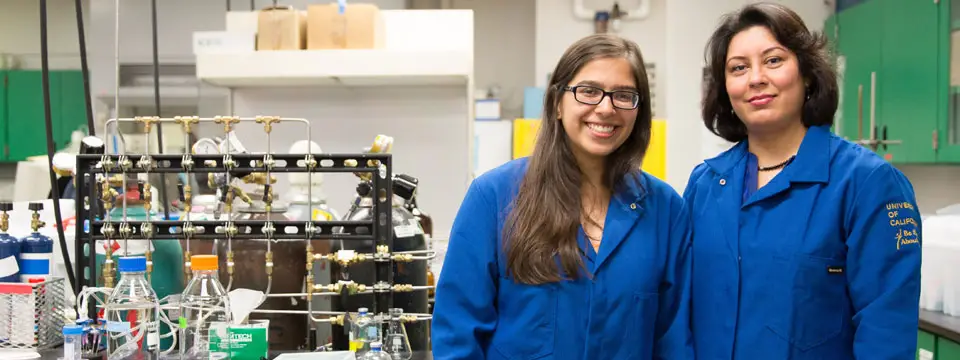
- Acceptance rate: 5.5%
- Average entry score: 680-760 SAT Math
- Student-to-faculty ratio: 18 to 1
- Estimated cost of attendance (tuition and fees): $16,847-$31,949
- Average earning potential for graduates: $86,000 (College Simply)
UCLA’s Samueli School of Engineering promotes the advancement of knowledge and the application of engineering principles to solve societal problems. Through its undergraduate and graduate programs, UCLA offers students a broad range of courses that prepare them for a variety of careers in both industry and academia.
This school incorporates the latest technology into its programs and provides students with the opportunity to work on real-world projects with industry partners.
At the end of their time at UCLA, graduates are prepared to enter the workforce with an extensive knowledge of engineering principles and the ability to apply them in a broad range of environments.
As one of the top schools for engineering, UCLA has produced many successful alumni who have gone on to achieve great things in their fields.
What is it like to study at UCLA?
#4. Cornell University

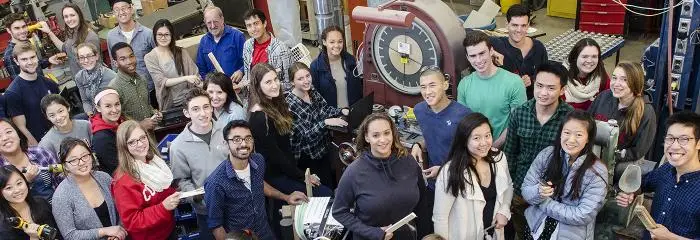
- Acceptance rate: 5.2%
- Average entry score: 750-800 SAT Math
- Student-to-faculty ratio: 9 to 1
- Estimated cost of attendance (tuition and fees): $78,992
- Average earning potential for graduates: $79,900 (College Simply)
As a top Ivy League engineering school, Cornell University has a long history of providing a high-quality education to its students.
The College of Engineering is known for its rigorous academics and hands-on learning opportunities through undergraduate research and internships.
In addition, Cornell’s College of Engineering offers different fields of study, including biomedical engineering, chemical engineering and computer science.
Students have access to experienced and dedicated faculty who are committed to providing a quality education.
What is it like to study at Cornell University?
#3. Harvard University

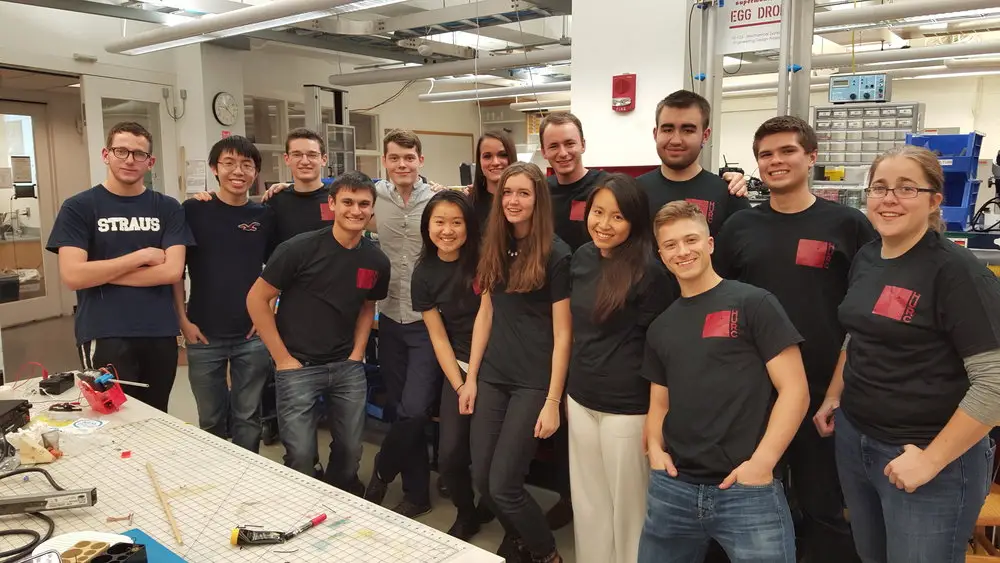
- Acceptance rate: 4.6%
- Average entry score: 1460-1570 SAT or 35 ACT
- Student-to-faculty ratio: 7 to 1
- Estimated cost of attendance (tuition and fees): $76,963
- Average earning potential for graduates: $128,900 (College Simply)
Harvard engineering education is characterized by its focus on problem-solving, collaboration and innovation. Both undergraduates and graduates are expected to take part in hands-on projects and research opportunities that encourage them to learn by doing.
Students can pursue programs in computer science, engineering systems, aeronautics and astronautics, applied mathematics and mechanical engineering.
This Ivy League school has an international reputation for its graduates, who have gone on to lead some of the world’s most innovative companies.
What is it like to study at Harvard University?
#2. Massachusetts Institute of Technology

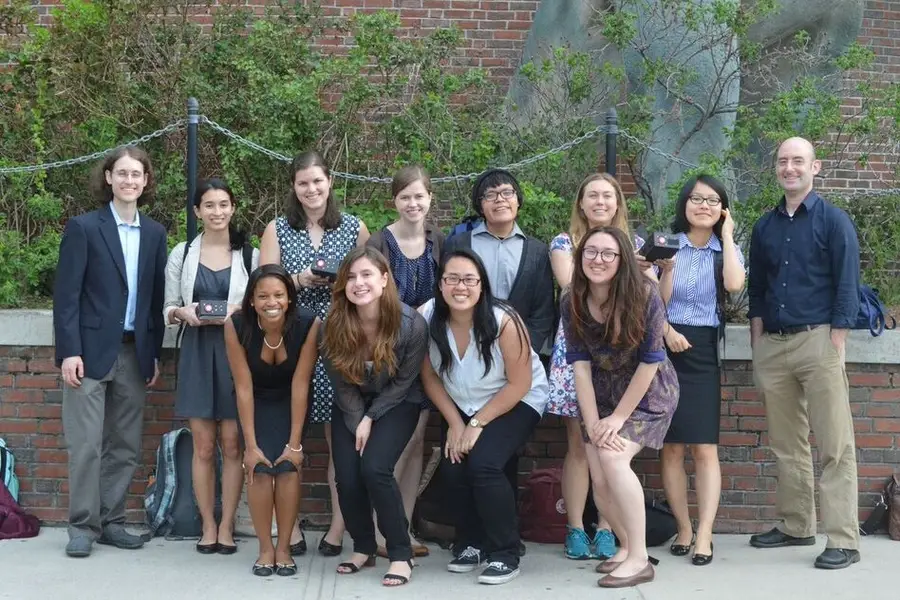
- Acceptance rate: 4%
- Average entry score: 1510-1580 SAT or 34-36 ACT
- Student-to-faculty ratio: 18 to 1
- Estimated cost of attendance (tuition and fees): $33,056-$53,581
- Average earning potential for graduates: $100,800 (College Simply)
MIT engineering education prepares students to take center stage in a world where the ability to solve problems, create opportunities and find innovative solutions is paramount.
This institution fosters an environment that encourages innovation, collaboration and hard work. MIT’s reputation as one of the best engineering schools in this country is a consequence of its commitment to excellence.
Massachusetts Institute of Technology offers courses ranging from biomedical engineering to mechanical engineering and beyond. The school’s faculty is composed of renowned scholars in their respective fields. They perform groundbreaking research and develop new technologies often adopted by industry.
What is it like to study at MIT?
#1. Stanford University


- Acceptance rate: 4%
- Average entry score: 1550 SAT or 35 ACT
- Student-to-faculty ratio: 5 to 1
- Estimated cost of attendance (tuition and fees): $78,898
- Average earning potential for graduates: $102,700 (College Simply)
Stanford University is known for promoting collaboration and creativity. In this environment, students are encouraged to work hard and think critically in order to come up with breakthrough solutions.
Students can choose from undergraduate degrees in chemical, biological, mechanical, electrical, and civil engineering, among others.
The institution also offers graduate degrees that provide students with the knowledge and skills to lead research teams, design new technologies, and manage engineering projects.
Stanford’s notable alumni include Larry Page and Sergey Brin, co-founders of Google Inc. Therefore, students are well-poised to take on leadership roles in their chosen fields.
There are many benefits to attending a top-level school, including the opportunity to network with influential people, gain access to prestigious internships, and build connections that will last a lifetime.
What is it like to study at Stanford University?
Conclusion
As you can see, this list is the cream of the crop when it comes to engineering schools in the United States. These institutions are churning out some of the brightest minds in the field, ready to tackle the world’s most complex challenges.
Whether you’re a prospective student, proud alumni, or just someone who appreciates the beauty of a well-designed bridge, these schools are sure to impress.
So get your pencils ready, start sharpening your problem-solving skills, and get ready to engineer a brighter future.
Selection Criteria
Here is a list of the factors we considered when selecting the best engineering schools:
Please note that the order in this list might vary by ranking criteria and sources.
- Reputation and ranking of the school: We looked for schools that have a strong reputation and high ranking in the field of engineering.
- Faculty expertise, qualifications, and specialization: We researched the faculty members and their areas of expertise, and qualifications to ensure that the school has professors with relevant expertise and specialization in the areas of engineering that are of interest.
- Curriculum and resources: We evaluated the curriculum to ensure it aligns with students’ interests and career goals and considered the quality of the school’s facilities and resources, such as labs, equipment, and libraries.
- Opportunities for hands-on learning and research: We looked for schools that provide opportunities for hands-on experience through internships, co-op programs, or fieldwork.
- Student support services and alumni network: We considered the availability of support services and the strength of the alumni network in providing mentorship, internships, and job opportunities after graduation.
- Extracurricular activities and diversity: We evaluated the availability of extracurricular activities and clubs that align with students’ interests and considered the school’s diversity and inclusivity.
- Networking and post-graduation support: We researched the school’s network of alumni and their post-graduation support for engineering students, and also considered if the schools have a strong network of industry professionals and researchers in the field of engineering.
Frequently Asked Questions
Q1. What is the #1 engineering in the United States?
While there is no single answer to this question, many experts consider the Massachusetts Institute of Technology (MIT) the best engineering school in the United States. MIT has an illustrious history as one of the world’s foremost research universities.
Other world-class engineering education schools include the California Institute of Technology (Caltech), Stanford University, and the University of California, Berkeley.
Q2. What is the most prestigious engineering degree?
A Doctor of Philosophy (Ph.D.) in engineering is the most prestigious engineering degree. Because of the highly specialized nature of this degree, it is not a common undergraduate or graduate program.
In most cases, individuals earning a Ph.D. in engineering will have completed their undergraduate degrees in another field before pursuing their doctorate.
Also, the highest-paying engineering careers include computer engineering, electrical engineering, and chemical engineering.
If you’re looking to make a big impact on your career, consider pursuing one of these degrees that can help prepare you for a high-paying job as an engineer.
Q3. What are the admission requirements for engineering schools?
The admission requirements for engineering school vary by school, but they generally include high grades in math and science classes and a strong SAT or ACT score.
Many schools also require students to take certain high school courses, such as chemistry, physics, and calculus.
If you’re applying to a top engineering school, be sure to check out their admission requirements, as they’ll likely be more rigorous than those of other schools.
Q4. What kind of networking and professional development opportunities are available to engineering students at the top schools?
There are many ways for engineering students to network with each other and with professionals in their field.
Some schools have engineering student groups that organize social events, professional development opportunities, and volunteer projects. Engineering students may also be able to join professional societies.
These organizations often hold conferences where you can meet other engineers working in different fields who can provide career advice and mentorship.
Q5. How do the top engineering schools in the US compare in terms of academic rigor and reputation?
The top engineering schools in the US are ranked highly by several different organizations, including U.S. News & World Report and The Princeton Review.
These rankings are based on various factors, such as the quality of faculty, research opportunities, and graduation outcomes.
Many top schools strongly focus on academics and require students to take many science classes before they can begin engineering courses.
References
[1] Official Websites
[2] Salary Data from Glassdoor, Grad Reports, College Factual, College Simply, Zippia
[3] Ranking references, including news media such as 2023 Best Engineering Schools.


